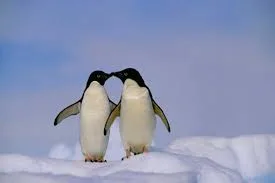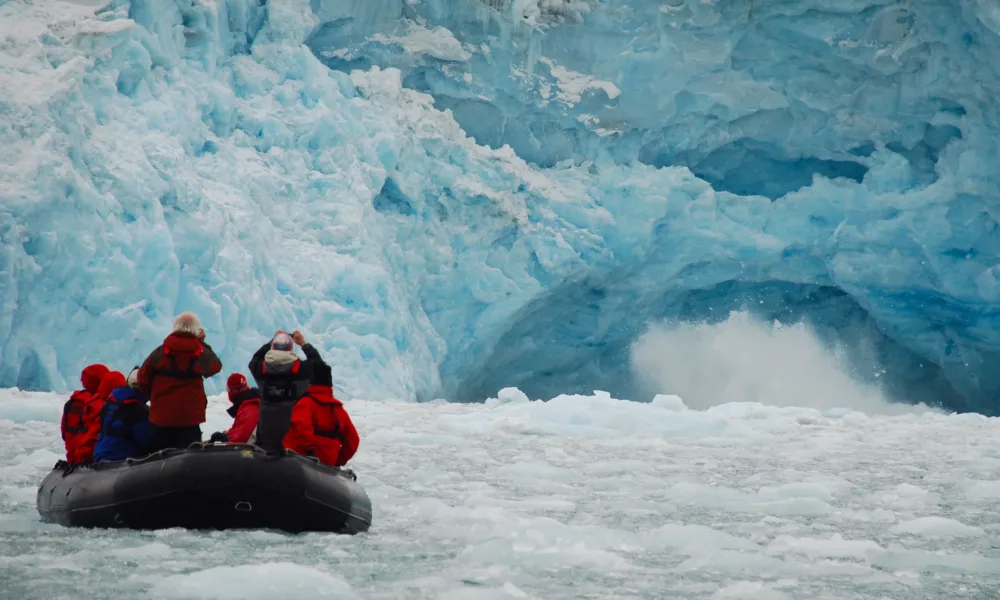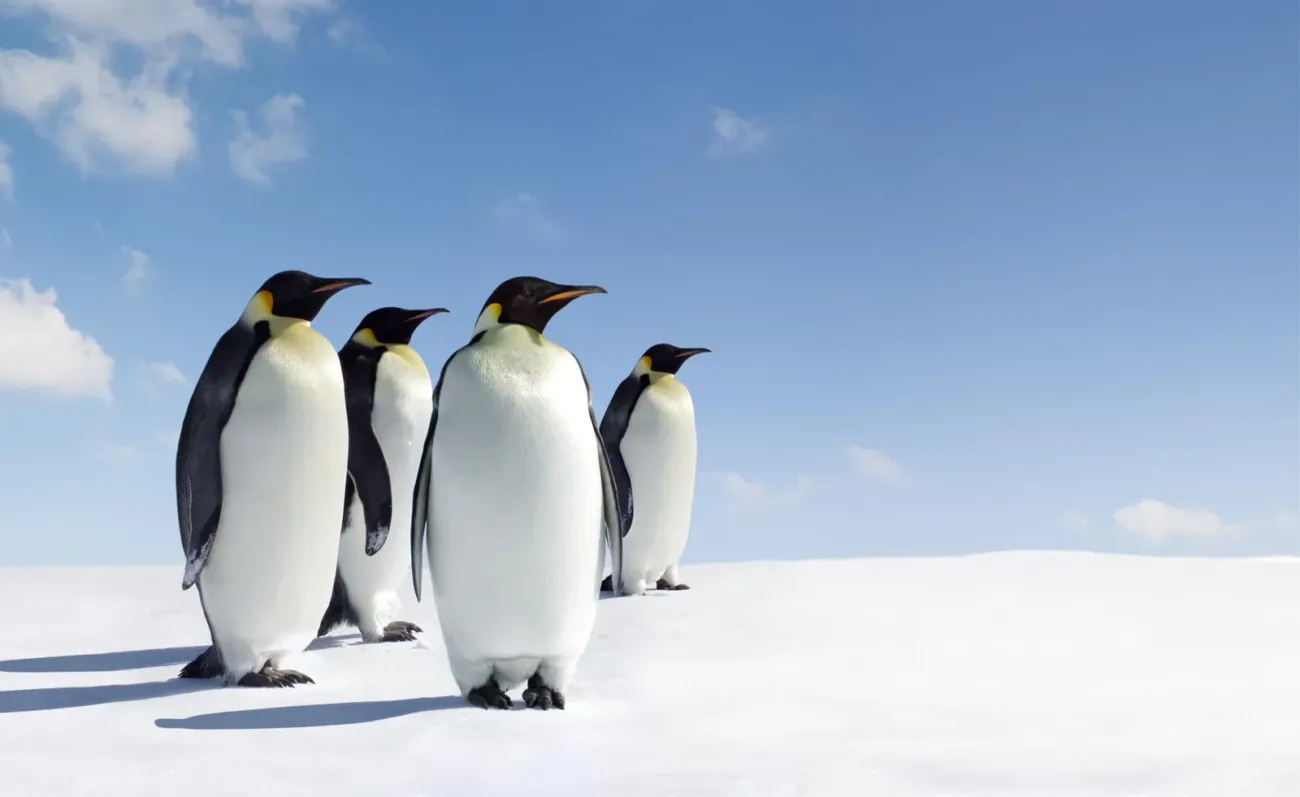For decades, Antarctica has stood as the symbol of our planet’s fragility—a frozen wilderness at the edge of the world, melting faster than ever under the pressure of climate change. News from the icy continent often speaks of melting glaciers, shrinking habitats, and vanishing wildlife. Yet, against this backdrop of global concern, scientists have discovered something astonishing and uplifting: certain penguin populations in Antarctica are not just surviving—they’re thriving.
Satellite imagery, field observations, and new conservation data reveal that some species, like the Adélie and Gentoo penguins, are increasing in number across parts of the Antarctic Peninsula and surrounding islands. It’s a rare good news story in the climate era—a glimmer of balance returning to an ecosystem that once seemed on the brink.
This isn’t a tale of luck or coincidence. It’s a story of resilience, adaptation, and the power of global environmental action.
Table of contents
- A Century of Change: From Decline to Renewal
- The Science Behind the Surge
- The Stars of the Antarctic Comeback
- How Conservation Policies Changed the Game
- Signs of a Healthier Ecosystem
- Tourism, Awareness, and Responsible Travel
- Challenges That Still Lie Ahead
- The Power of Adaptation: Lessons from the Penguins
- The Role of Technology in Conservation
- A Ripple Effect Across the Globe
- Cultural and Emotional Connection: Why Penguins Matter to Us
- A Glimpse Into the Future: The Next 50 Years of the Ice Continent
- Conclusion: A Song of Survival and Renewal
A Century of Change: From Decline to Renewal
In the mid-20th century, Antarctica’s penguin populations faced mounting challenges. Industrial whaling and overfishing disrupted food chains, while warming waters and melting ice reduced nesting grounds. Scientists documented sharp declines in Emperor and Chinstrap penguins, whose breeding cycles depended on stable sea ice.
The outlook was grim. By the early 2000s, researchers predicted that several colonies might vanish entirely within decades if trends continued. But nature, when given even the slightest reprieve, can surprise us.
Over the last 15 years, a series of international efforts—marine protected areas (MPAs), fishing restrictions, pollution controls, and climate cooperation—have begun to stabilize parts of the Antarctic ecosystem. These changes, combined with natural adaptation and recovery cycles, are now allowing certain penguin populations to rebound.
The latest data from the British Antarctic Survey and NASA’s Earth Observatory show growth in Adélie penguin numbers on several coastal islands and the Antarctic Peninsula. In some regions, colonies have doubled since the late 1990s. Gentoo penguins, known for their adaptability, are also expanding their breeding range southward as conditions become more favorable.
The Science Behind the Surge
So, why are penguin populations increasing now, when climate threats still loom large? The answer lies in the complex interplay of environmental factors and human intervention.
1. Marine Protected Areas (MPAs): Safeguarding the Penguins’ Pantry
In 2002, the Commission for the Conservation of Antarctic Marine Living Resources (CCAMLR) designated vast regions around the Ross Sea and the South Orkney Islands as MPAs. These zones limit fishing, especially for krill—the tiny shrimp-like creatures that form the foundation of the Antarctic food web.
With reduced competition for krill, penguins have seen improved food availability. The Ross Sea, often called “the last ocean,” is now home to one of the healthiest marine ecosystems on the planet.
2. Cleaner Oceans and Reduced Pollution
International bans on certain pollutants, such as heavy metals and persistent organic pollutants (POPs), have led to cleaner water and healthier marine life. Penguins, which sit near the top of the Antarctic food chain, benefit directly from this improvement. Cleaner food means stronger chicks, higher survival rates, and more robust colonies.
3. Shifts in Sea Ice and Habitat Expansion
While excessive melting remains a threat, moderate reductions in sea ice in some regions have opened up new nesting areas and access to foraging zones. Gentoo penguins, for instance, prefer ice-free land and open water; they’ve taken advantage of these new areas, expanding their colonies into previously uninhabitable zones.
4. Resilient Adaptation and Behavioral Flexibility
Gentoo penguins are proving to be remarkably adaptable. Unlike Emperor penguins that rely heavily on stable ice platforms, Gentoos are quick to modify their nesting habits, alter foraging patterns, and relocate when environmental conditions shift. This adaptability may be key to their survival in a changing climate.
5. Collaborative Global Research and Monitoring
Technological advances have revolutionized how we study penguins. High-resolution satellite imagery allows scientists to identify colonies by analyzing guano stains on the ice, while drones and autonomous underwater vehicles track penguin foraging routes.
This new wave of data collection not only provides insight into penguin behavior but also allows rapid response to emerging threats—whether from temperature anomalies, pollution, or human interference.
The Stars of the Antarctic Comeback
Let’s take a closer look at the species leading this hopeful resurgence.
Adélie Penguins: The Ice Lovers Returning to Glory
Adélies are classic Antarctic penguins, perfectly adapted to icy conditions. For years, their populations declined due to reduced sea ice and changing prey availability. But in East Antarctica, colonies are now booming.

Recent surveys estimate that there are over 3.8 million breeding pairs—an increase of nearly 30% over the past two decades. Improved krill stocks and protected breeding zones have played a major role in this comeback.
Gentoo Penguins: The Masters of Adaptation
Gentoo penguins are explorers of the penguin world. They’re pushing further south each year, nesting in regions that were once too icy to inhabit. Their flexibility with diet—feeding on krill, fish, and squid—helps them adapt to shifting ecosystems.
Gentoo numbers have grown by 20–40% in several regions, a remarkable sign of resilience.
Chinstrap Penguins: Stabilizing After Years of Decline
While still facing challenges, some Chinstrap colonies have begun to recover, particularly in the South Shetland Islands. Their diet overlaps with Adélies, but as krill stocks stabilize, competition has eased. Continued conservation efforts could see them rebound further.
How Conservation Policies Changed the Game
The success story of Antarctica’s penguins is also a testament to the power of international cooperation. Antarctica is unique—no single nation owns it, and it is governed by the Antarctic Treaty System, which designates the continent as a zone for peace and science.
In recent decades, this treaty framework has enabled scientists and policymakers from over 50 countries to work together on ecological preservation. Key initiatives include:
- The Ross Sea MPA (2016): The largest marine protected area in the world, covering 1.55 million square kilometers.
- Fishing Quotas and Krill Management: Strict limits on commercial krill fishing ensure sustainable food supplies for penguins and other marine life.
- Tourism Regulations: Ecotourism in Antarctica now follows strict guidelines to minimize disturbance to wildlife and ecosystems.
- International Scientific Collaboration: Shared research stations and open data policies have accelerated conservation efforts.
These measures show that coordinated global action—when done right—can restore balance to even the most fragile environments on Earth.
Signs of a Healthier Ecosystem
The resurgence of penguins is more than a single-species story; it’s an indicator of broader ecological recovery. Healthy penguin populations signal thriving krill communities, balanced predator-prey relationships, and improved marine biodiversity.
Seals, whales, and seabirds that share the same food sources are also benefiting. In essence, penguins are the living barometers of Antarctica’s health—and right now, that barometer is trending upward.
Tourism, Awareness, and Responsible Travel
Penguins have long captured the hearts of travelers. With the rise of eco-conscious tourism, more people are visiting Antarctica than ever before—nearly 100,000 annually before the pandemic. While tourism brings economic and educational benefits, it must be carefully managed to protect this delicate environment.

The International Association of Antarctica Tour Operators (IAATO) has introduced rigorous standards to ensure that visitors maintain a respectful distance from wildlife, reduce emissions, and avoid pollution.
Educational programs onboard expedition ships now teach travelers about conservation, climate science, and responsible photography. Many tourists return home as ambassadors for climate awareness, spreading the message that protecting nature is not just possible—it’s happening.
Challenges That Still Lie Ahead
Despite the good news, Antarctica remains one of the most climate-vulnerable regions on Earth. Warming temperatures, melting sea ice, and shifting ocean currents continue to pose long-term risks.
Some Emperor penguin colonies, which depend on thick sea ice for breeding, are still in decline. The balance between thriving species like Gentoos and struggling ones like Emperors illustrates the uneven nature of climate impact.
Moreover, growing human interest in Antarctic resources—such as krill harvesting for omega-3 supplements—could undo progress if not carefully regulated. The key will be maintaining strict conservation policies, expanding MPAs, and reducing global carbon emissions.
The Power of Adaptation: Lessons from the Penguins
Penguins are natural teachers. They remind us that survival isn’t about resistance—it’s about flexibility, cooperation, and timing.
- Adaptation: Penguins change nesting sites, diets, and foraging routes when conditions shift. Humanity, too, must adapt to evolving environmental realities.
- Community: Penguins huddle for warmth and protection during storms—proof that collective action ensures survival.
- Resilience: Even in freezing darkness, penguins nurture life. Their instinct to care for the next generation mirrors our responsibility to protect future generations.
In a sense, penguins embody the philosophy of balance: to live in harmony with change rather than against it.
The Role of Technology in Conservation
Cutting-edge technology has become an ally in understanding and protecting penguins.
- Satellite Monitoring: NASA and the European Space Agency (ESA) use high-resolution imagery to count colonies from space, identifying guano stains that reveal population density.
- Drones and Sensors: Lightweight drones capture detailed imagery without disturbing penguins, while underwater sensors track ocean temperature and krill movement.
- DNA Barcoding: Scientists analyze feathers and guano samples to study diet diversity and detect pollutants.
- AI and Machine Learning: Artificial intelligence helps process massive datasets, predicting breeding outcomes and identifying environmental risks faster than ever before.
This fusion of technology and ecology ensures that conservation decisions are based on precision, not guesswork.
A Ripple Effect Across the Globe
The recovery of Antarctic penguins carries global significance. It demonstrates that when nations commit to science-driven policies, ecosystems can heal—even in the harshest environments.
These lessons extend beyond the ice. Coral reefs, rainforests, and savannas all depend on similar principles: habitat protection, pollution control, and responsible resource use.
In an age often dominated by environmental despair, the Antarctic penguin story offers proof that hope is not naive—it’s evidence-based.
Cultural and Emotional Connection: Why Penguins Matter to Us
Part of what makes penguins so beloved is their human-like behavior. They waddle, they court, they parent, they persevere. Across cultures, penguins have become symbols of loyalty, teamwork, and resilience.

Movies like March of the Penguins and documentaries such as Frozen Planet have helped people form emotional bonds with these birds, transforming distant conservation issues into personal causes. When people care, they act—and that collective empathy fuels the global environmental movement.
In many ways, the penguin’s comeback represents something larger: the power of love, science, and collaboration to heal what was once broken.
A Glimpse Into the Future: The Next 50 Years of the Ice Continent
If current conservation trends continue, Antarctica could remain one of the world’s last relatively intact ecosystems by 2075. Expanded MPAs, stricter fishing controls, and renewable energy adoption could stabilize both penguin and fish populations.
Scientists envision a future where Antarctica becomes the ultimate “living laboratory” for sustainable coexistence—proof that humanity can learn to thrive without depleting its resources.
Children born today may grow up in a world where penguins are not endangered icons but flourishing ambassadors of ecological recovery. That vision alone makes the ongoing effort worthwhile.
Conclusion: A Song of Survival and Renewal
In a landscape defined by ice, wind, and silence, the cries of penguins now echo with renewed strength. Their thriving colonies stand as living monuments to what humanity can achieve when we act with foresight, compassion, and unity.
Antarctica’s penguins remind us that even at the planet’s edge, life finds a way—not through dominance, but through balance. Their story is not merely one of biological recovery but of moral renewal. It challenges us to look inward and ask: if nature can adapt and endure, can we not do the same?
Each chick that hatches on the frozen shores is a symbol of what’s still possible—a whisper from the wild that says:
“The world can heal, if we let it.”
